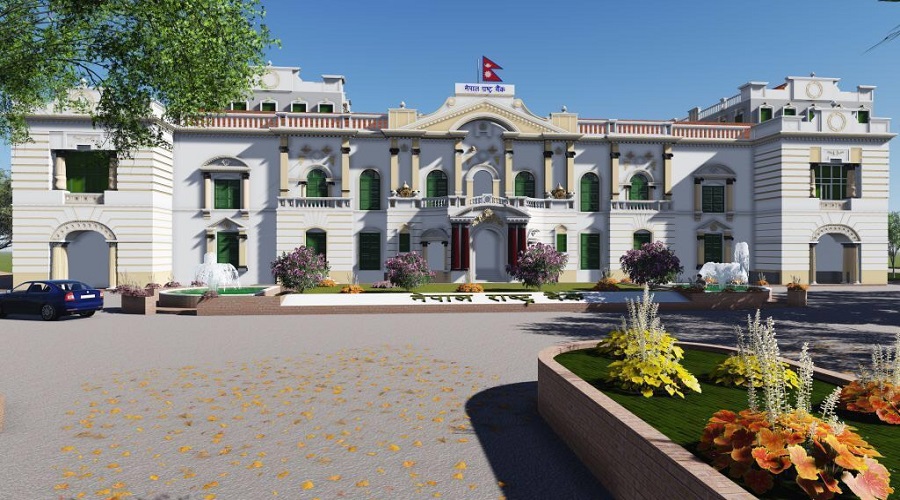KATHMANDU: Nepal’s year-on-year (y-o-y) consumer price inflation stood at 4.10 percent in mid-August 2024, a significant drop from the 7.52 percent recorded in the same period last year, according to the latest data. The decline in inflation can be attributed to lower food and beverage inflation at 6.17 percent and non-food and services inflation at 2.94 percent during the review month.
In comparison, last year saw higher price increases, with food and beverage inflation surging by 8.90 percent and non-food inflation by 6.62 percent.
Inflation in Food and Beverage Category
In the food and beverage sector, the vegetable sub-category saw the highest price increase, soaring by 19.07 percent year-on-year (y-o-y). Prices for pulses and legumes rose by 12.09 percent, cereal grains and their products by 9.15 percent, and milk products and eggs by 3.66 percent. However, the price index for spices saw a 2.75 percent decline.
Non-food and Services Inflation
Under the non-food and services category, the y-o-y price index for miscellaneous goods and services surged by 7.94 percent, followed by alcoholic drinks at 5.38 percent, clothes and footwear at 4.58 percent, and tobacco products at 3.52 percent. Meanwhile, the price index for insurance and financial services remained unchanged.
Inflation in Urban and Rural Areas
Inflation was marginally higher in rural areas, where the y-o-y price index rose by 4.28 percent, compared to 4.03 percent in urban areas.
Provincial Inflation Breakdown
Among the provinces, Sudurpashchim Province recorded the highest inflation at 6.69 percent, while Karnali Province saw the lowest inflation rate at 3.46 percent. Koshi Province registered 4.61 percent, Madhesh Province 4.17 percent, Bagmati Province 3.49 percent, Gandaki Province 3.90 percent, and Lumbini Province 3.81 percent inflation during the review month.
Trade and Economic Performance
In terms of trade, Nepal’s merchandise exports in the first month of FY 2024/25 fell by 9.6 percent to Rs. 12.23 billion, compared to an 8.7 percent decrease in the same period last year. Exports to key destinations like India, China, and other countries also declined by 10.6 percent, 59.8 percent, and 3.5 percent, respectively. However, exports of particle board, tea, and shoes saw an uptick, while those of cardamom, palm oil, and zinc sheets declined.
Merchandise imports fell slightly by 0.6 percent to Rs. 128.38 billion in the first month, with imports from India decreasing by 4.4 percent. Imports from China and other countries, however, grew by 12.0 percent and 0.4 percent, respectively.
Trade Deficit and Foreign Exchange Reserves
Nepal’s total trade deficit increased by 0.4 percent to Rs. 116.15 billion during the review period. The export-import ratio declined to 9.5 percent from 10.5 percent last year. Gross foreign exchange reserves rose by 2.5 percent to Rs. 2092.22 billion in mid-August 2024, sufficient to cover 16.7 months of merchandise imports and 13.5 months of total imports, including services.
Remittance Inflows and Employment
Remittance inflows grew by 18.0 percent, reaching Rs. 136.93 billion in the review period, contributing significantly to Nepal’s balance of payments surplus of Rs. 40.90 billion. The number of Nepali workers taking first-time approval for foreign employment stood at 36,928, while 22,647 renewed their work permits.
Government Revenue and Expenditure
The government’s total revenue mobilization reached Rs. 94.74 billion in the first month of FY 2024/25, while total expenditure stood at Rs. 40.21 billion. The government’s cash balance at the Nepal Rastra Bank (NRB) reached Rs. 197.82 billion.
Monetary Sector and Liquidity
The broad money supply (M2) decreased by 0.7 percent during the review period, and reserve money dropped by 3.8 percent. However, the NRB absorbed a total liquidity of Rs. 4476.45 billion, while net foreign assets increased by Rs. 40.90 billion.
The economic data for August 2024 highlights a slowdown in inflation but underscores challenges in trade and economic growth. The government and monetary authorities will continue monitoring these trends to ensure financial stability and promote economic recovery.
Brief Note for Summary of BOP as BPM6
Nepal Rastra Bank (NRB) has been publishing the summary of the Balance of Payments (BOP) as per the IMF’s Balance of Payments Manual, fifth edition (BPM5). NRB had started publishing the summary of BOP as per the IMF’s Balance of Payments and International Investment Position Manual, sixth edition (BPM6) by mapping the standard components from the BPM5 table, since August 2020. From 2024/25, NRB has started publishing the country’s BOP as per BPM6 and International Transaction Reporting System (ITRS) Guidelines, 2022 which is based on BPM6.
The presentation format is different in BPM6 table from that of BPM5. In the BPM6 table, credit entries and debit entries in the current and capital account are presented in columns. The financial account uses the headings “net acquisition of financial assets” and “net incurrence of liabilities” instead of “debits” and “credits”.
Both credit and debit entries in the current and capital account are presented with a positive (+) sign. In the financial account, increase in assets/liabilities is presented with a positive (+) sign, and decrease in assets/liabilities is presented with a negative (-) sign.
In the current account, current account balance is calculated as credits minus debits. In the financial account, net lending/net borrowing is calculated as net acquisition of financial assets minus net incurrence of liabilities. In the “changes in reserves net”, positive number denotes the BOP surplus and negative number denotes the BOP deficit.
Some components, which were previously consolidated under a single heading in the BPM5 Table, have now been disaggregated into multiple headings and some have been reclassified. Therefore, certain components in the BPM6 (mapping) Table, published previously before July 2024, are not directly comparable to those in recently published BPM6 Table. Caution should be taken while directly comparing such components.

